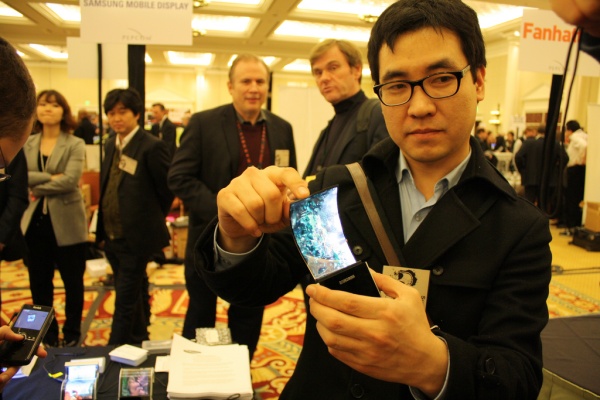Samsung wants to mass produce flexible Active-matrix organic light-emitting diode (AMOLED) displays next year. The electronics giant also hopes to introduce smartphones and wrist watches with these flexible displays as soon as Q2 2012, according to the Korean website etnews.
To reach its goal, the Korean company has set up a joint venture with Ube Kosan, a Japanese company that can deliver the required plastic substrate material. Samsung will be ramping up production with a new 1000m² plant, for which construction is expected to be finalized this year. Unsurprisingly, there is already speculation that the Samsung Galaxy S III will feature these displays.
The displays in question can be bent or rolled up like a piece of paper. Although they are still part of a new technology, Samsung has done enough testing to be confident that they can be used by consumers on a daily basis.

Last month, Samsung researchers designed and built a prototype of a seamless foldable AMOLED display. The display's mechanical and optical robustness were tested by performing 100,000 folding-unfolding cycles. The relative brightness at the junction decreased by just 6 percent, which is hardly recognizable by the human eye and so the deterioration can be considered negligible.
The AMOLED displays we'll see from Samsung next year will not be foldable that many times. Most flexible displays, which are becoming increasingly more viable and interesting to mobile companies, are bendable or rollable to avoid the creases that occur from folding a material completely in half. Some believe that foldable displays could be the future of mobile devices as they solve the problem of minimizing the size of the device while simultaneously maximizing the size of the display.